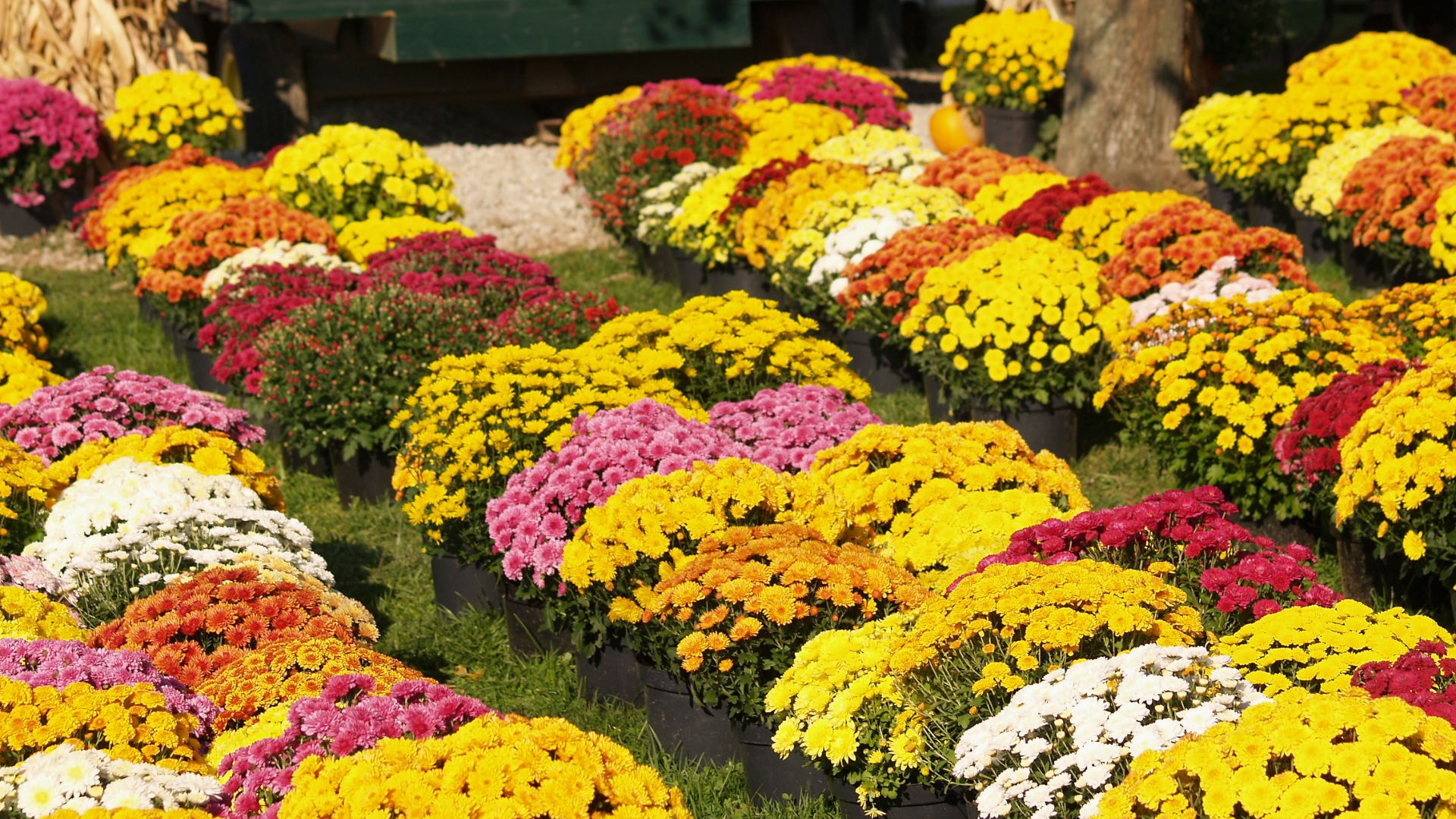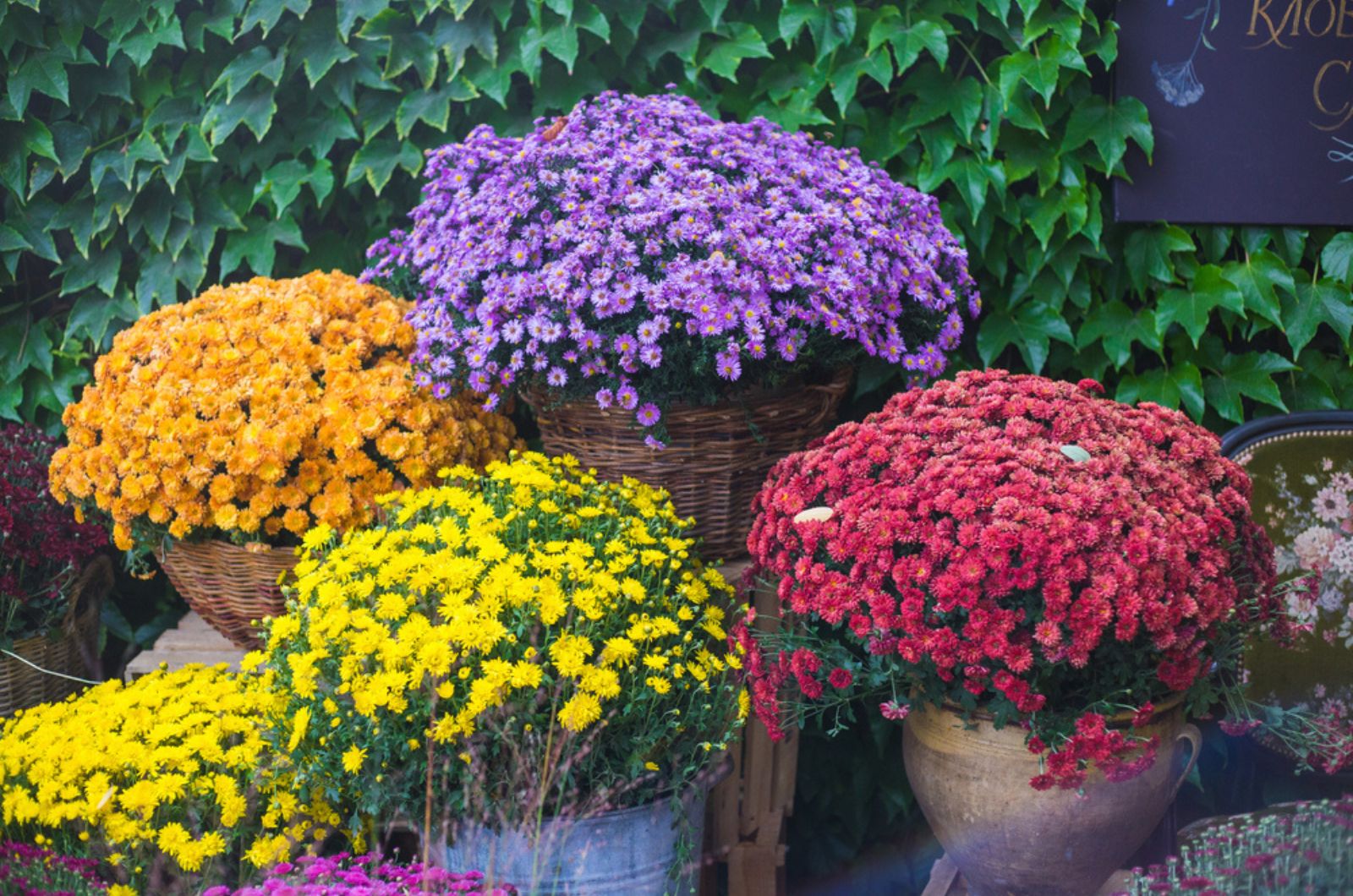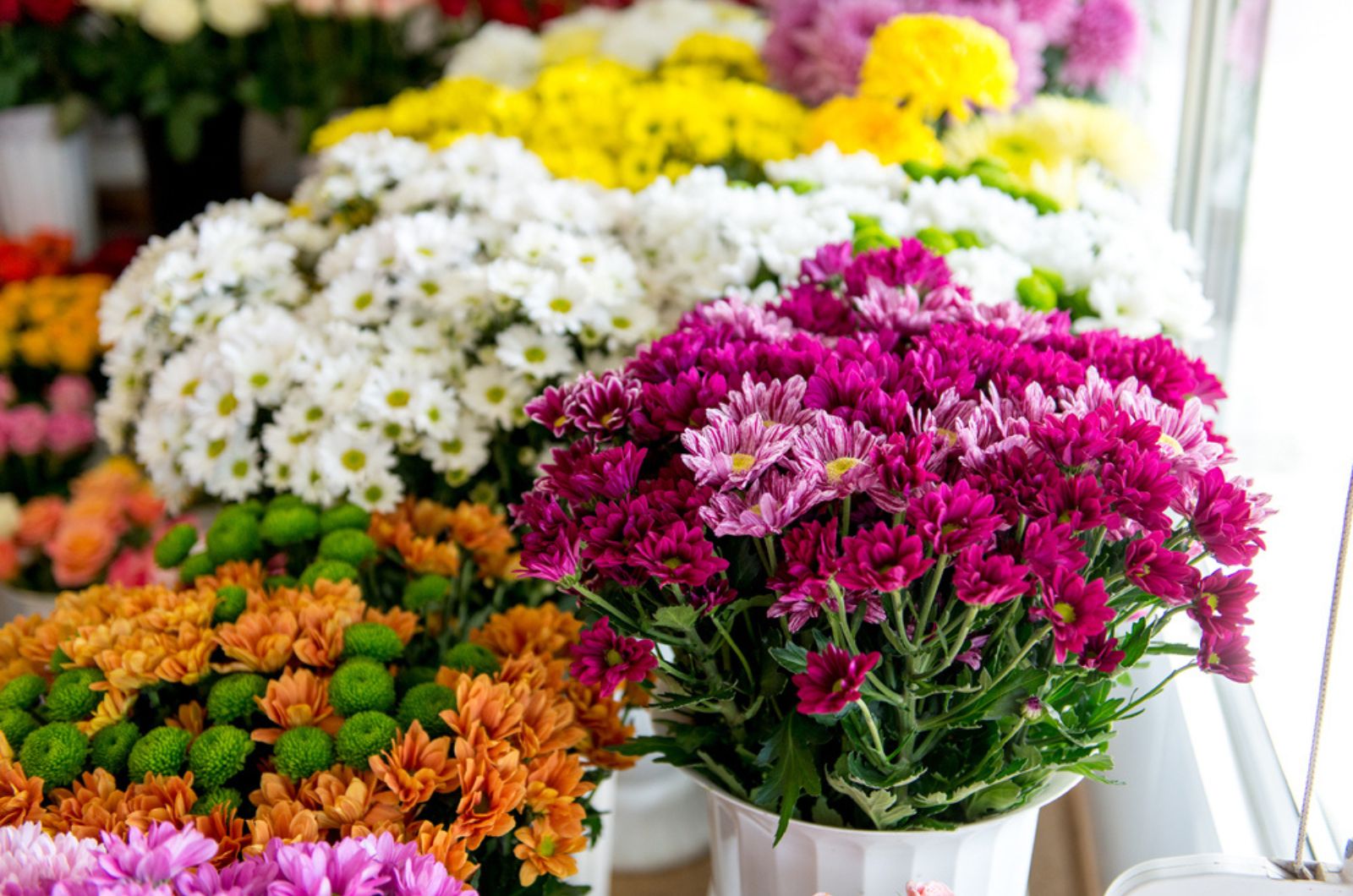The plants from the Chrysanthemum genus, commonly known as mums, adorn gardens worldwide. Their spectacular daisy-shaped blossoms add a splash of color and fit into every garden design.
These popular plants are fairly easy to maintain and even beginners can grow them.
But one of the most frequent questions I get is, “are mums perennials or do they complete their life cycle within a year?”
In this article, you’ll find out the definite answer to this question and some top-notch care tips for keeping mums happy and healthy!
Let’s get started!
Perennials Or Annuals?
These plants are divided into two main categories: florist and garden mums. This is essential to know because these species have different life cycles.
The florist types of mums are annuals, which means they won’t regrow the following year. Their life cycle ends after the flowering season in the fall.
On the other hand, garden mums, commonly referred to as hardy mums, are classified as perennials and you can enjoy their blossoms year after year.
How to distinguish between them? The florist types are typically sold in pots during the fall and their main characteristics are multiple flower buds that are about to open.
Hardy chrysanthemums are those species you see in nurseries in spring. Their growth habit is a little bit loose and you can see more leaves between the blossoms.
Which Mums Should You Choose?
Let’s see the characteristics of both types so that it’s easier for you to choose the perfect one for your garden.
Florist Mums
Once the fall arrives, supermarkets and garden centers are full of lovely blossoming plants, one of which is florist mums.
These plants typically reach up to 2 feet tall and may spread just as wide. They’re completely covered in small blossoms and it’s really hard to see any foliage.
The leaves are actually more slender and more sensitive than those of hardy mums.
These flowering plants come in various hues, such as white, red, and yellow, and some are even bicolored. If you plan on buying florist mums, look for those that have the biggest number of flower buds.
The more buds this plant has, the longer its flowering season will be. When your florist mums lose their last flower buds, you’ll need to dispose of them.
Even though these species are considered hardy in USDA zones 7 through 9, they aren’t meant to overwinter successfully.
The roots are too shallow and would struggle with growth even in warmer climates.
Because of their short life cycle, these mums are grown in containers rather than in the ground. It’s easier to discard them after the blooming season ends.
Garden Mums
These plants are one of the most spectacular fall perennials. You should plant hardy mums in the spring to get a splendid garden display in the fall.
The underground structures of these plants are known as stolons and are responsible for successful overwintering.
These types of mums are hardy in USDA zones 4 through 9 and will come back year after year.
Fall chrysanthemums typically grow up to 3 feet tall and 2 feet wide; they’re fast growers and will reach their full size in one growing season.
Hardy mums’ blossoms aren’t densely packed. When compared to florist mums, fall chrysanthemum species have fewer but larger blooms.
You can easily see their foliage, which combines perfectly with the colorful blooms.
These species will set their first buds in the late summer when days become shorter. Their blooming season will start a couple of days after and the flowers will last for up to 8 weeks.
Fall mums have deep roots that need a lot of space to spread. This is why you should plant them in the ground rather than in a container.
Mums Growing Guide
Growing mums isn’t hard no matter the type. Here is a complete guide.
Light And Watering
All chrysanthemum species have one thing in common: they need full sun to thrive.
If you plant or keep them in the shade, your mums won’t reach their full potential. There will be fewer blossoms and the plants will get leggy.
Florist species are heavy drinkers and you’ll need to water them once a day during hot summer days. Hardy species show more drought tolerance but will grow best if their soil is consistently moist.
The pH should range from 6.2 (slightly acidic) to 7.0 (neutral) for both types of mums.
Soil And Fertilizer
The three basic soil requirements mums have are fertility, good drainage, and constant moisture.
The pH should range from 6.2 (slightly acidic) to 7.0 (neutral) for both types of mums.
The florist mums will most likely be rootbound after you purchase them, so it would be best if you repot them into a larger container.
Pruning And Deadheading
You can encourage your fall chrysanthemums to grow bushier by pruning them. Once they reach about 6 inches in the spring, remove the tips of every branch.
Repeat this process a few more times during the summer months.
When it comes to florist chrysanthemums, they’ll benefit from deadheading.
Mums are indeed one of the prettiest flowering plants in the gardening world. If you want a splash of color in your garden during the fall, florist mums are perfect. Garden mums are the best choice for growers who prefer plants that come back every year.
One thing is for certain, no matter which mums you choose, you’ll enjoy the spectacular display of hues these plants provide during the season!



